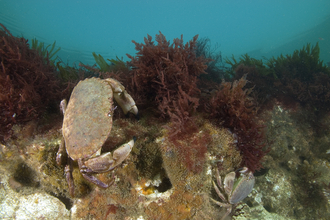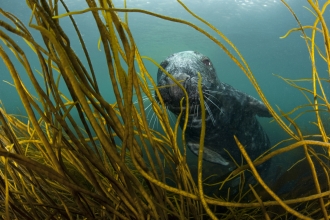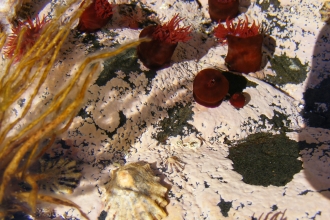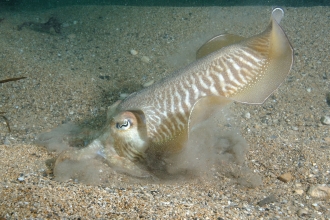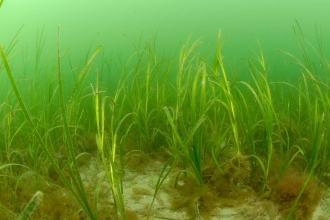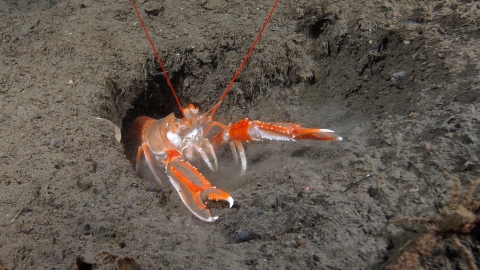
Scampi ©Paul Naylor www.marinephoto.co.uk/
Mud
What is it?
Mud is fine sand that is constantly or occasionally covered by water. It is formed when fine silt and clay is deposited by the action of currents and tides.
There are various classifications of muddy habitats from deep sea to intertidal. The intertidal area, exposed to both wind and sea as the tide moves in and out, is often referred to as a mudflat. Species tend to grow quicker and become larger on soft mud, whereas higher numbers of smaller animals tend to be found on sandy mud habitats.
A natural solution to the climate crisis
Oceans absorb 20-35% of human-made CO2 emissions every year!
All animals and plants are carbon stores. The carbon is incorporated into their tissues at first, and then later transferred into the mud and sediments when they die and sink to the seafloor.
Surprisingly, the biggest contributor of carbon to seafloor ocean sediments are not the largest animals in our seas such as whales, dolphins and basking sharks. Instead some of our smallest marine organisms - including phytoplankton - have the greatest impact, forming layers of sediment on the seafloor, eventually storing carbon for thousands of years if left undisturbed.
Globally, 10 billion tonnes of carbon are transferred to seabed sediments when phytoplankton die or are eaten then excreted every year!
For maritime nations such as the UK, with control over large areas of sea and features like fjords and sea lochs, coastal and offshore sediments are hugely important in tackling the climate and ecological crises.
Why is it like this?
Mud settles in depressions in the seabed, but can only do so where the water movement is limited. Too much water movement will prevent the fine silt and clay from settling.
It can form vast plains of what seems to be an empty desert, but in reality mud is very rich in nutrients and is able to support a great number of species.
Distribution in the UK
Muddy areas can be found all around the coasts and throughout the seas of the UK, from the shoreline to the depths of the deep sea. Intertidal mudflats are found in sheltered coastal inlets such as estuaries and harbours. Around the coasts of the UK, intertidal mudflats cover around 270,000 ha of land.
What to look for
From a distance, mud can appear barren and lifeless. But nothing could be further from the truth!
In the dark depths of the deep sea, wildlife thrives in muddy habitats. Brittlestars, spider crabs and lobsters scurry across the surface, whilst species like bristleworms burrow into the mud. Scampi, the fish-shop favourite, can be found in self-dug burrows in muddy seabeds.
Subtidal mud, found in shallower areas that are never exposed to the air, even on the lowest tides, also hosts a great diversity of wildlife. Worms, bivalve molluscs, anemones and brittlestars can all be found living or feeding on these muddy plains.
Where the land meets the sea, intertidal mudflats are as important for animals that live above the waves as those that dwell beneath them. Vast numbers of worms, bivalves and cockles bury themselves in the mud. As the tide drops and the mudflats are exposed to the air, it becomes a buffet for waterfowl and wading birds.
Conservation
Our muddy habitats face a number of threats. Disturbance of currents can reduce the amount of silt and clay that is deposited, while also carrying sediments away. Physical disturbance can be caused by dredging in shipping lanes and channels, as well as bait digging and oyster fisheries acting to alter the structure of the mud plains.
Mudflats are prone to pollution due to their proximity to the mainland. The result of pollution is often a reduction in the number of invertebrates present in the mud, which means the habitat can't support as many species.
Safeguarding ocean sediments and other important habitats, allows them to thrive and recover from past degradation, acting as natural solutions to climate change on a grand scale.

